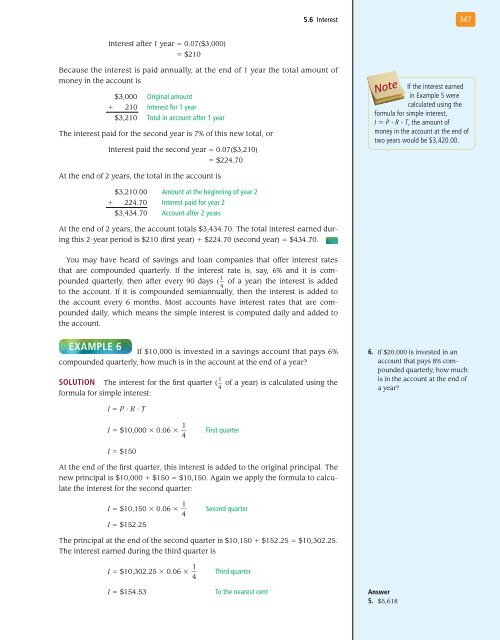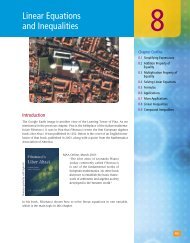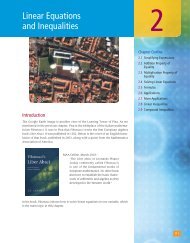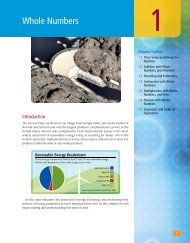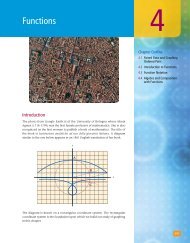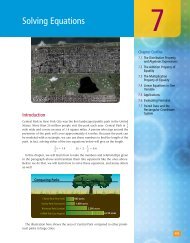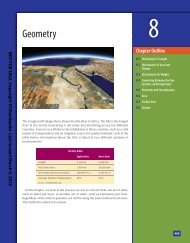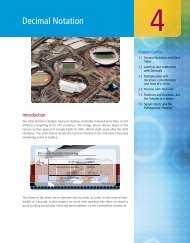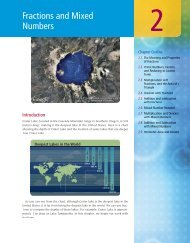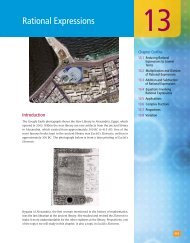Percent - XYZ Custom Plus
Percent - XYZ Custom Plus
Percent - XYZ Custom Plus
- No tags were found...
Create successful ePaper yourself
Turn your PDF publications into a flip-book with our unique Google optimized e-Paper software.
5.6 Interest347Interest after 1 year = 0.07($3,000)= $210Because the interest is paid annually, at the end of 1 year the total amount ofmoney in the account is$3,000 Original amount+ 210 Interest for 1 year$3,210 Total in account after 1 yearThe interest paid for the second year is 7% of this new total, orInterest paid the second year = 0.07($3,210)= $224.70NoteIf the interest earnedin Example 5 werecalculated using theformula for simple interest,I = P ⋅ R ⋅ T, the amount ofmoney in the account at the end oftwo years would be $3,420.00.At the end of 2 years, the total in the account is$3,210.00 Amount at the beginning of year 2+ 224.70 Interest paid for year 2$3,434.70 Account after 2 yearsAt the end of 2 years, the account totals $3,434.70. The total interest earned duringthis 2-year period is $210 (first year) + $224.70 (second year) = $434.70.You may have heard of savings and loan companies that offer interest ratesthat are compounded quarterly. If the interest rate is, say, 6% and it is compoundedquarterly, then after every 90 days (_1 of a year) the interest is added4to the account. If it is compounded semiannually, then the interest is added tothe account every 6 months. Most accounts have interest rates that are compoundeddaily, which means the simple interest is computed daily and added tothe account.Example 6If $10,000 is invested in a savings account that pays 6%compounded quarterly, how much is in the account at the end of a year?Solution The interest for the first quarter (_1 of a year) is calculated using the4formula for simple interest:6. If $20,000 is invested in anaccount that pays 8% compoundedquarterly, how muchis in the account at the end ofa year?I = P ⋅ R ⋅ TI = $10,000 × 0.06 × _1 First quarter4I = $150At the end of the first quarter, this interest is added to the original principal. Thenew principal is $10,000 + $150 = $10,150. Again we apply the formula to calculatethe interest for the second quarter:I = $10,150 × 0.06 × _1 Second quarter4I = $152.25The principal at the end of the second quarter is $10,150 + $152.25 = $10,302.25.The interest earned during the third quarter isI = $10,302.25 × 0.06 × _1 Third quarter4I = $154.53To the nearest centAnswer5. $5,618


